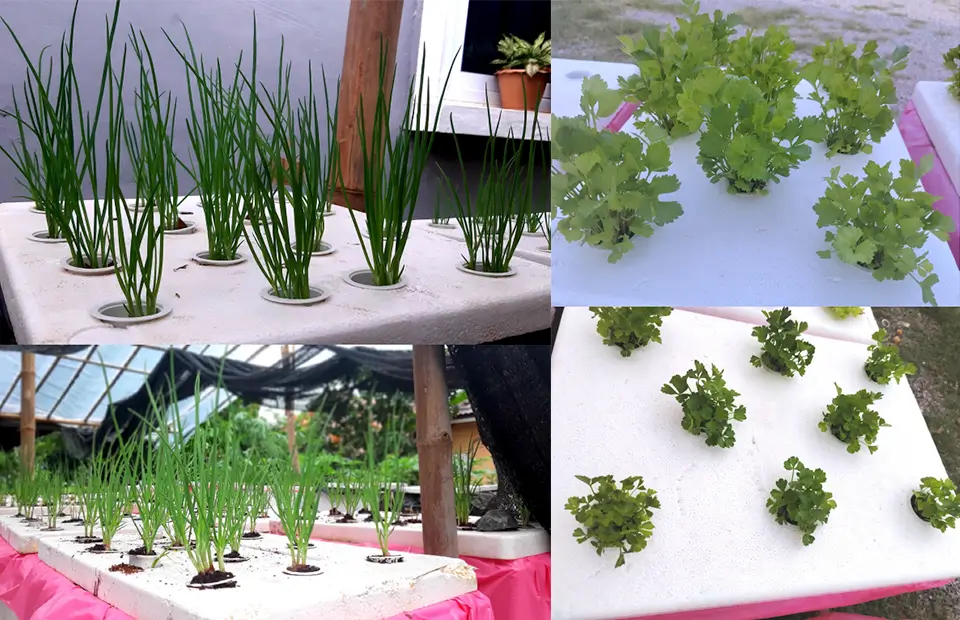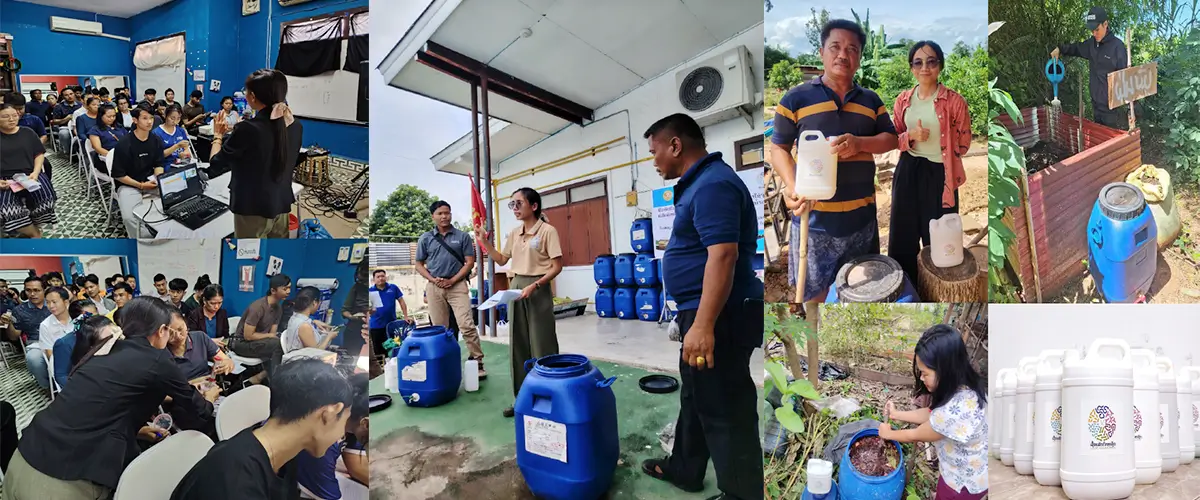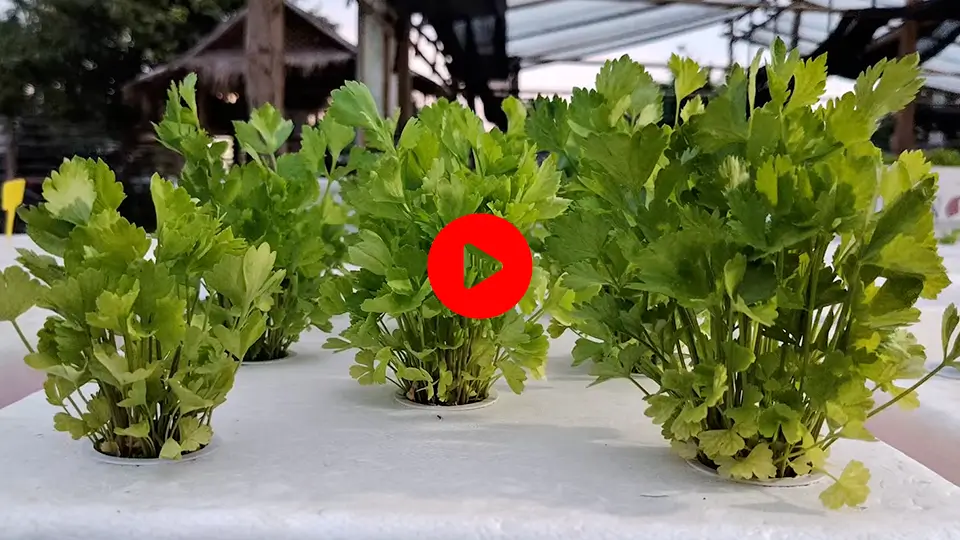SAVANNAKHET, Lao PDR—Hydroponic farming—the practice of growing plants without soil—has been gaining popularity among vegetable farmers in Savannakhet province, Lao PDR. Water efficiency, higher yields, faster growth, and reduced reliance on pesticides and soil are commonly known advantages of hydroponics in meeting consumer food demand and climate resilience. Yet, farmers must import pricey hydroponic nutrients from neighboring countries like Thailand and Vietnam. It turns out that an affordable innovation can come from farm waste and a liquid mixture of microbes called probiotics, which farmers can produce locally.
The Southeast Asian Regional Center for Graduate Study and Research in Agriculture (SEARCA) awarded the Grants for Research towards Agricultural Innovative Solutions (GRAINS) to a project teaching hydroponic farmers how to make their own probiotics and nutrient solutions from agricultural waste. The project, led by Dr. Viengvilaiphone Botthoulath, offered a biotechnology-based innovation for hydroponic farmers to scale up farming operations and meet consumer demand.
The initiative proved its contribution to putting more income and profitability in farmers' pockets. This outcome reflects SEARCA's push for Sustainable Transformation of Agricultural Systems through Innovation in Southeast Asia (SUSTAIN Southeast Asia).
 Agricultural waste fermentation can nourish spring onions and celery in hydroponic systems.
Agricultural waste fermentation can nourish spring onions and celery in hydroponic systems.
Botthoulath's team implemented a low-cost, science-based solution: creating and using probiotics out of rice washing to ferment mixtures of banana peel, leafy vegetable waste, eggshells, coffee grounds, and fish washing, into an organic nutrient. The star of the process is the probiotic culture called lactic acid bacteria (LAB)—the same friendly microbes found in yogurt. When used as a starter culture, these probiotics help convert farm waste like plant residues into nutrient-rich solutions suitable for hydroponic as well as soil-based farming.
Results from the farms show that organic nutrients from probiotic LAB can fully replace commercial fertilizers to grow celery and spring onions in hydroponic systems. Lettuce, which requires more complex nutrients, performed best with an equal blend of commercial and probiotic nutrients—still cutting chemical use by half. The cost savings of using the probiotic LAB nutrients ranged from 50 to 70 percent over that of commercial solutions.
Botthoulath said imported solutions expose farmers to high costs, shipping fees, taxes, and potential concerns regarding the long-term health effects of chemically treated crops.
"Both consumers and farmers are increasingly interested in avoiding chemical-based liquid fertilizers. The reliance on foreign inputs also exposes farmers to supply chain disruptions and price fluctuations, creating additional challenges for sustainable agricultural development," she reported.
The hands-on training session led by Botthoulath in 2025 attracted 30 hydroponic growers, soil-based farmers, and livestock producers in Savannakhet province. They learned how to culture probiotics, ferment agricultural waste, and monitor growing conditions using tools like pH and electrical conductivity (EC) meters. Each participant received a fermentation kit that included tanks, digital measuring devices, starter cultures, and a sample of organic nutrient liquid—allowing them to experiment directly on their farms. The feedback was overwhelmingly positive. Over 85 percent of the participants found the training easy to apply and planned to expand adoption of the techniques on their own farms.
 Farmers are trained on using probiotic LAB to produce organic nutrient solution for their farms.
Farmers are trained on using probiotic LAB to produce organic nutrient solution for their farms.
Mrs. Sivilay Soutthixaiyalath, a hydroponic farm owner, agreed that probiotic LAB could help reduce use of synthetic fertilizers and boost their confidence on the safety of their production.
Beyond the training, the project continues to reach more farmers as instructional videos for making probiotic LAB and hydroponic nutrient solutions have been made accessible through social media.
Farmers are also discovering other uses of LAB beyond hydroponics. Mr. Bounmy Khamdy applied it to improve cassava yields and produce nutrient-rich compost on his farm. He also found out that spraying the product on his poultry bedding significantly reduced ammonia odor. Another farmer had similar findings for pig beddings, revealing an environmental benefit and potential for reducing emissions from livestock farming.
"This project is our commitment to promoting more sustainable practices and ensuring equitable benefits for local farmers, particularly smallholder farmers," said Botthoulath.
With its multiple applications and low-cost approach, this probiotic innovation is more than just a farming technique—it's a movement toward circular, resilient agriculture.
